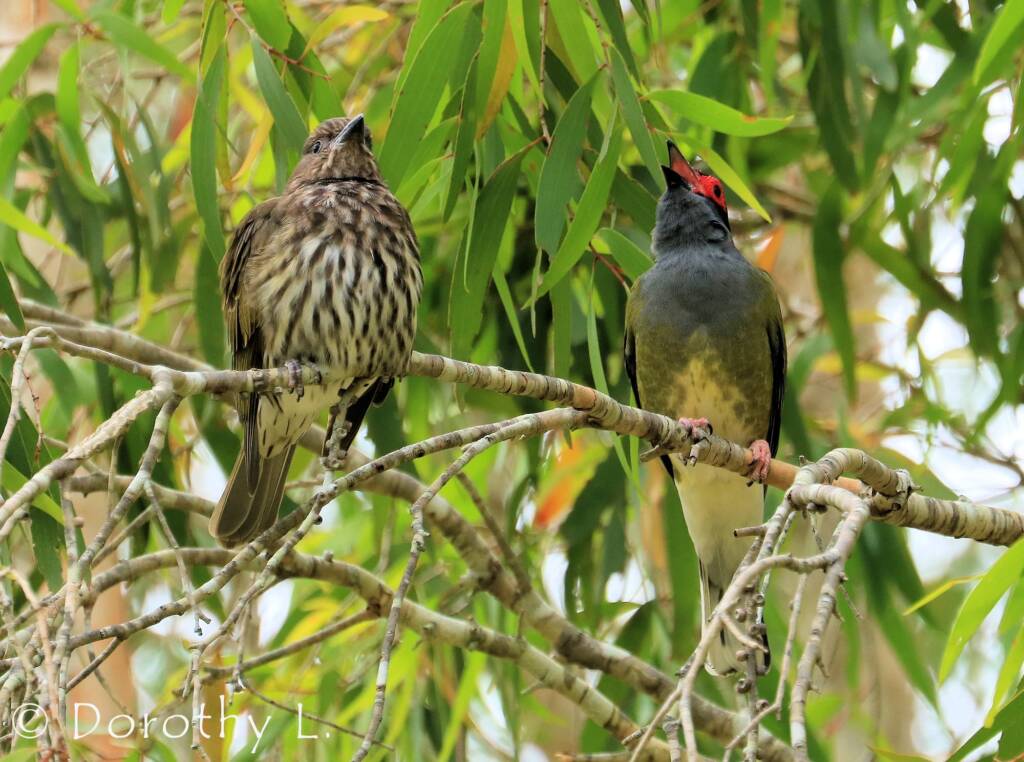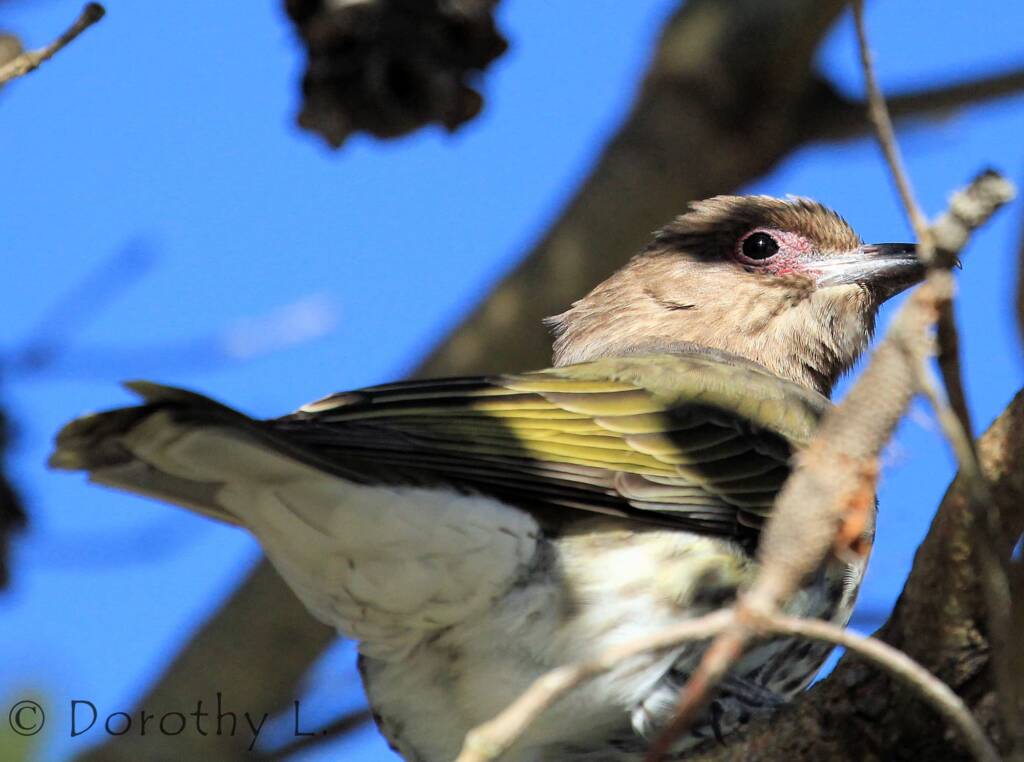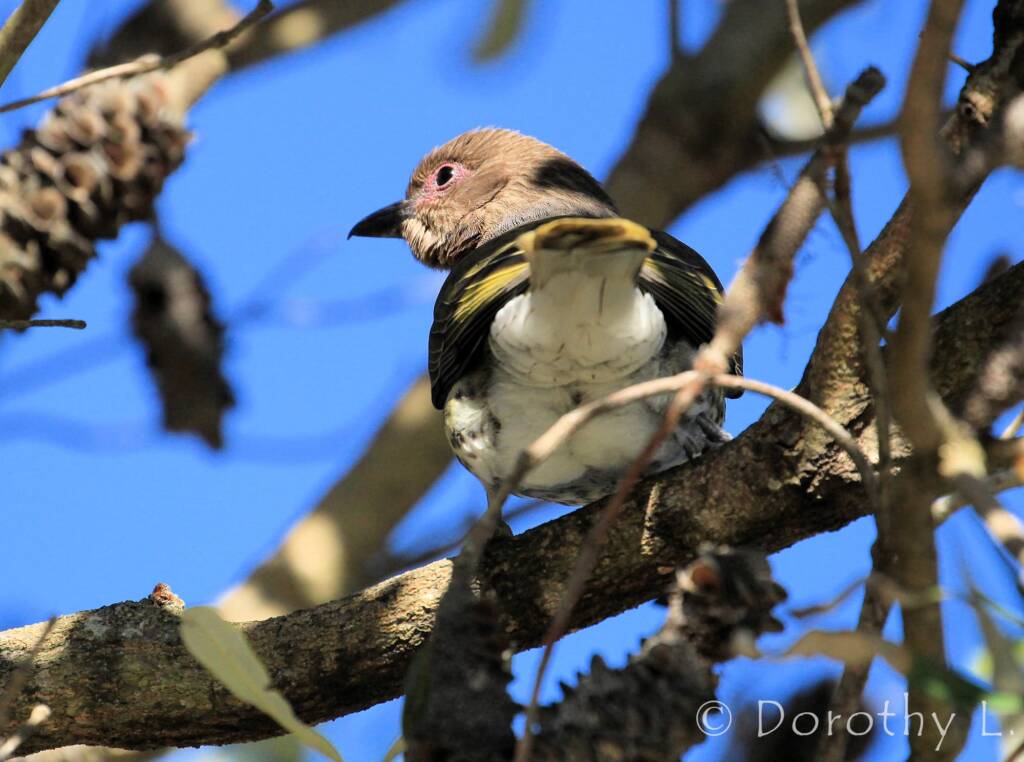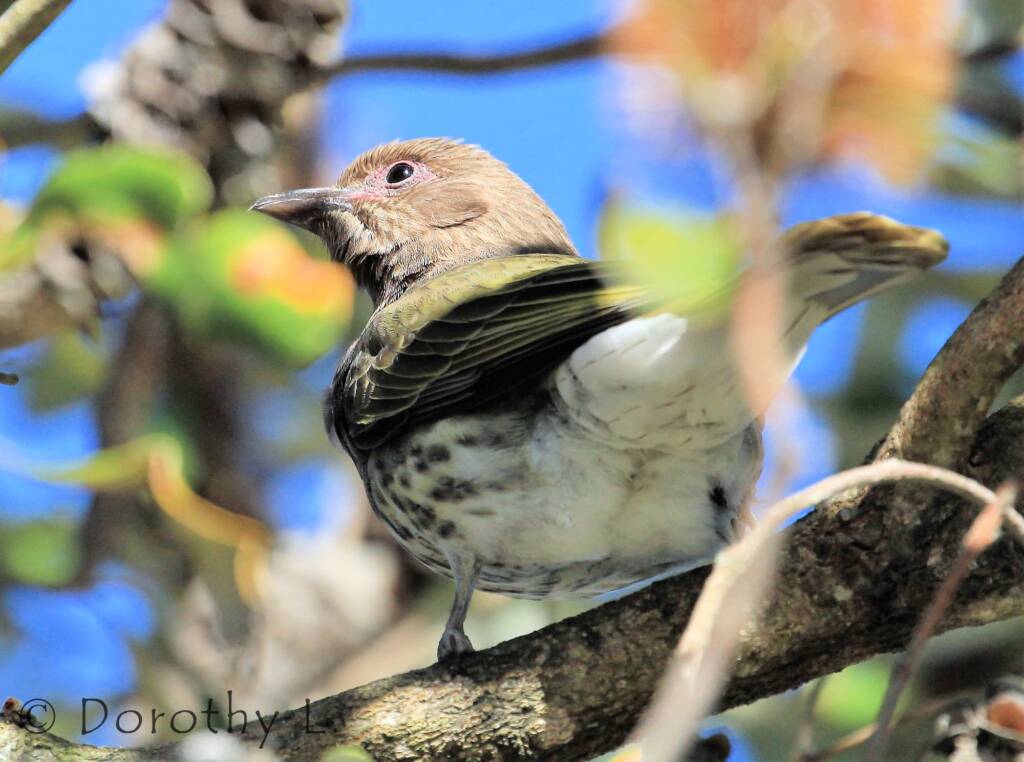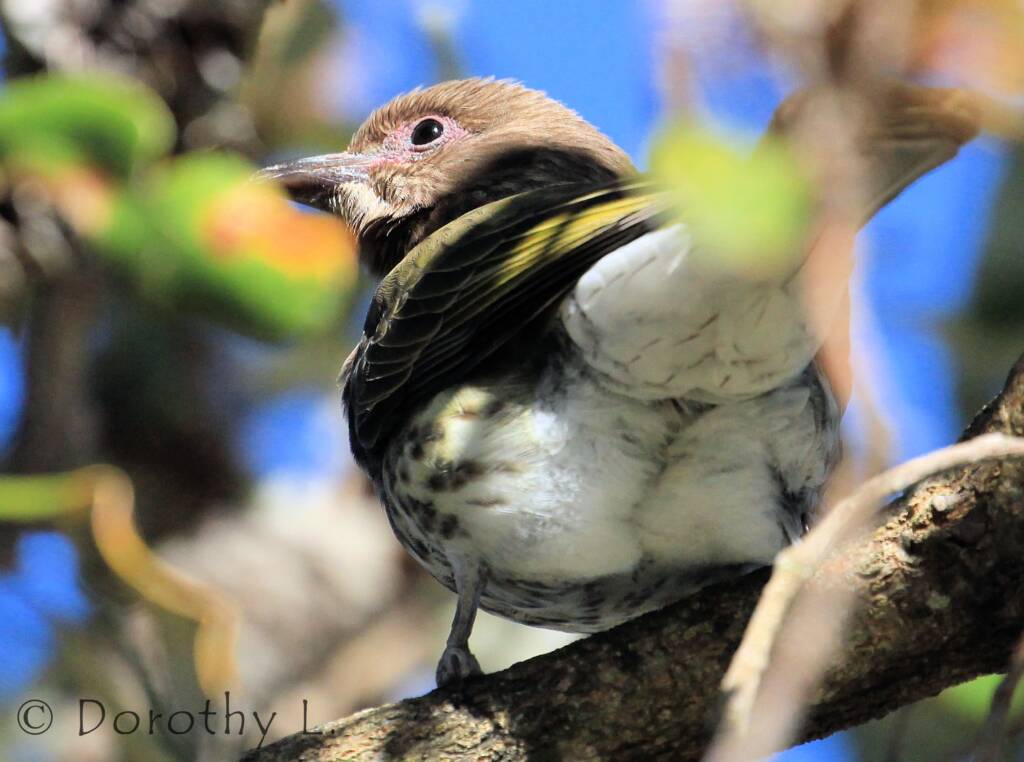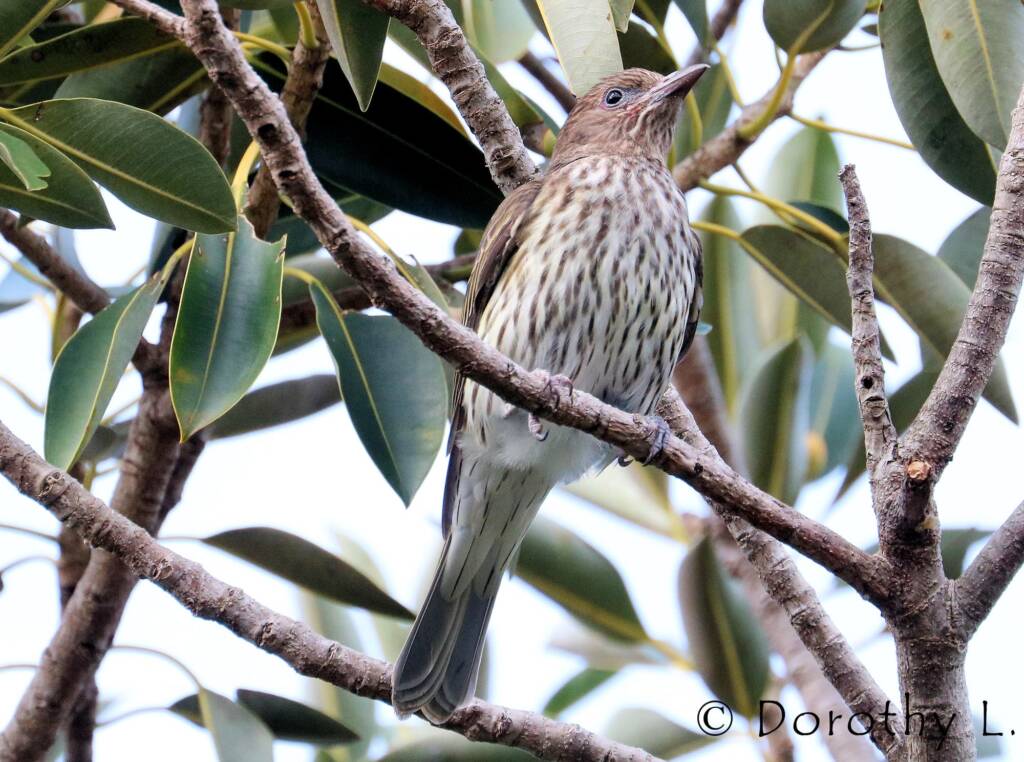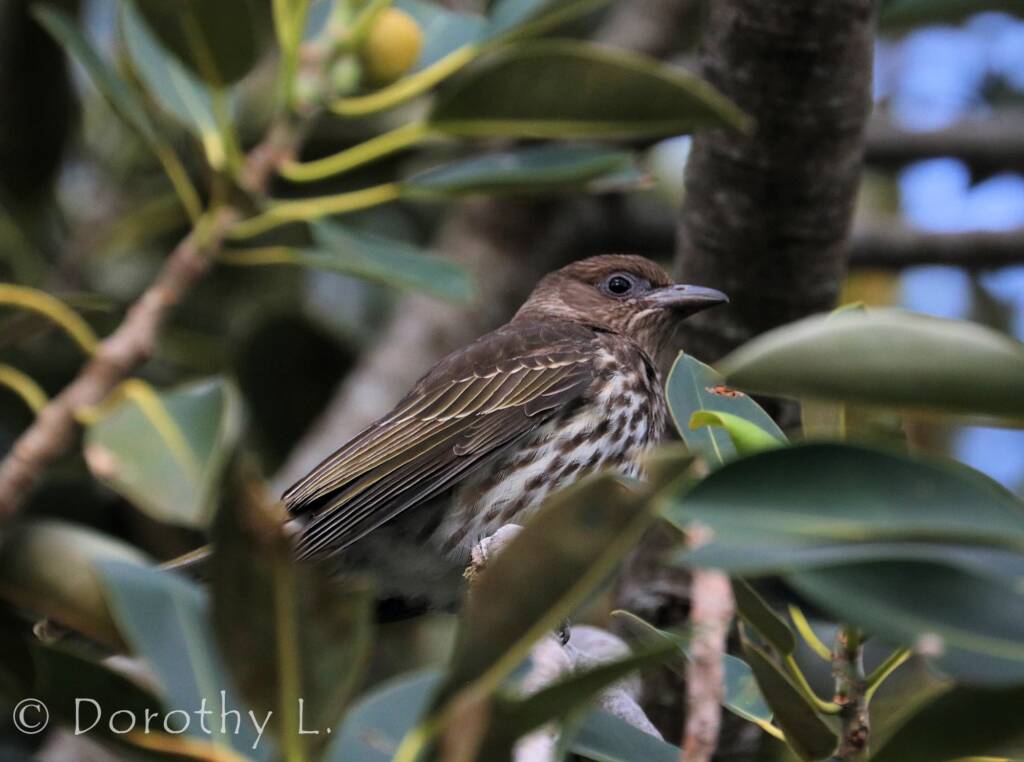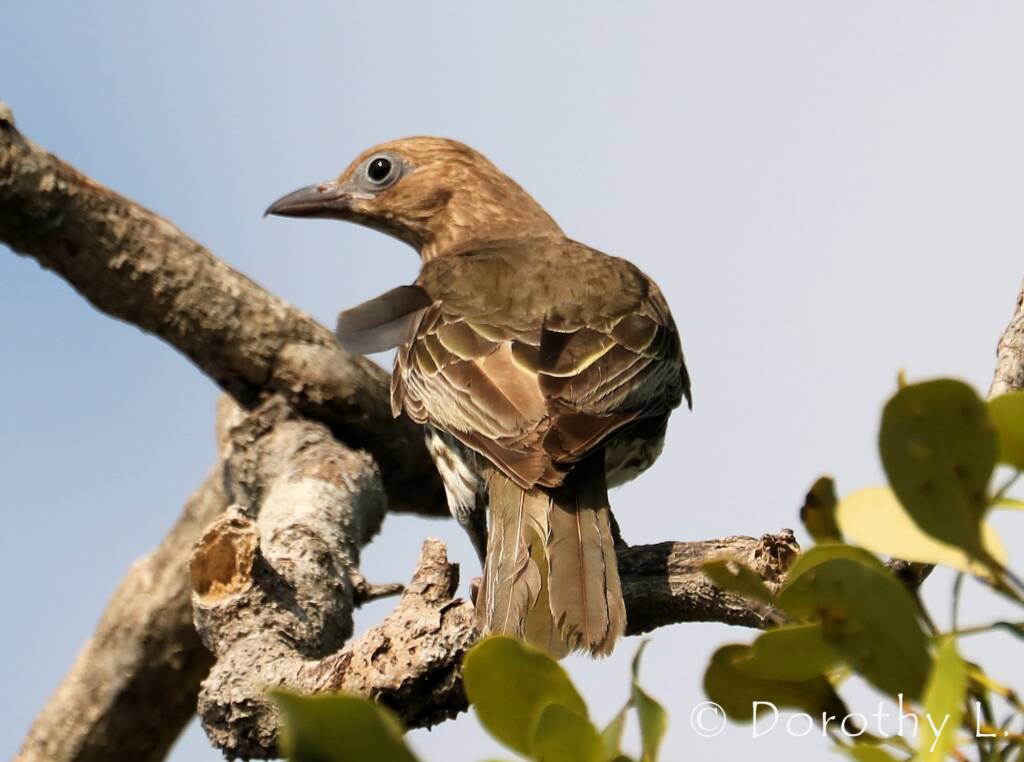The Australasian Figbird (Sphecotheres vieilloti) eats a variety of fruit, with figs being the predominant fruit. They also consume nectar, berries, seeds and insects. They are arboreal species, usually seen foraging high in the canopy of trees, where large flocks may congregate, especially on laden fruit trees. The seeds of the figs among other seeds, are passed undigested through the gut of the figbirds, that enables them to germinate, if not consumed by other birds.

They are found throughout the northern and eastern parts of Australia, stretching from the Kimberley in Western Australia, through New South Wales and Victoria. As well as rainforests regions, the can be seen in urban areas where there are fruit trees.
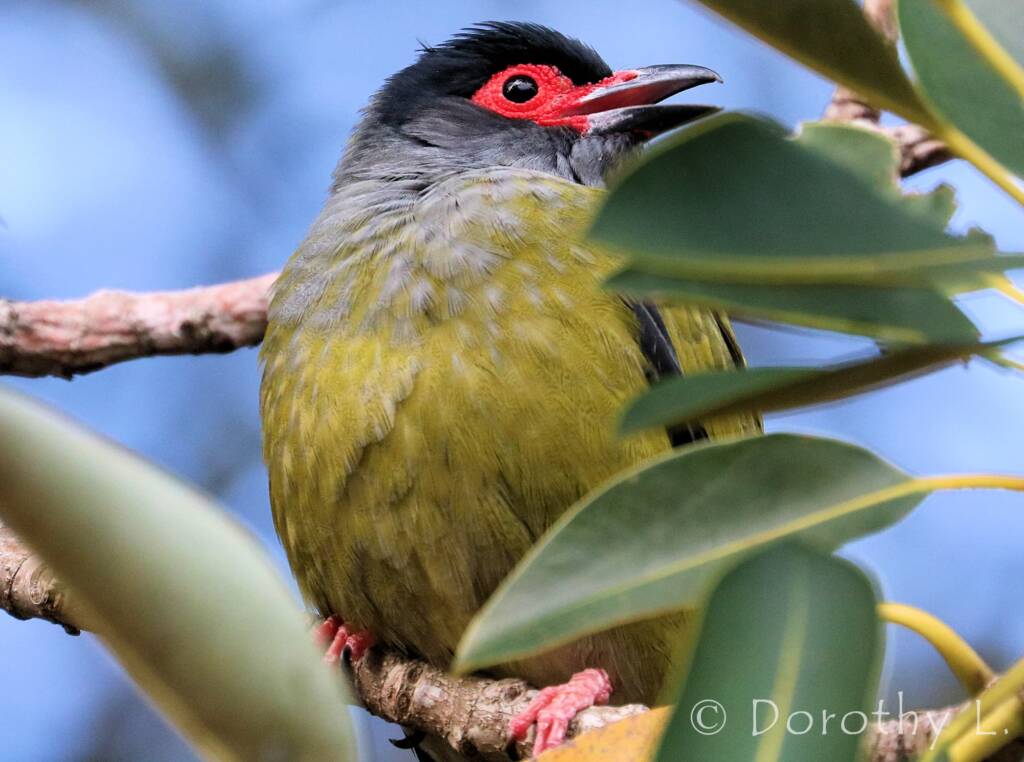
A bulky bird, the male and female are sexually dimorphic (a condition where the sexes of the same species exhibit different characteristics beyond their sexual organs). The male bird have bare, red skin around the eye, that contrast against the black crown, grey neck and throat. The body is olive-green, with a white under-tail area. The female bird have grey skin around the eye, lacking the distinctive head markings. They are brown-green above, a dull-white below, that is streaked with dashes of brown. Both sexes have a blackish bill.

There are two distinct colour forms of the male bird of this species, with the males that are north of Proserpine, Queensland having a yellow front.
The Australasian figbird is found throughout northern and eastern Australia, from the Kimberley in Western Australia through to the border of New South Wales and Victoria. They inhabit thick rainforests and suburban areas where there are plenty of fruit trees. Figbirds are omnivores, so they feed on fruit, berries and insects.
Common name
Known commonly as the “figbird”, their other names include the Australasian Figbird, Australian Figbird. Depending on the subspecies, they are also known as known as (depending on the subspecies) Green Figbird, Yellow Figbird, Northern or Southern Figbird (the nominate form). Other locally common names are based on the fruit they eat, such as the Banana-bird and the Mulberry-bird or on the physical feature such as Red-eyes or Yellow-bellied Figbird.
- Scientific classification
- Kingdom: Animalia
- Phylum: Chordata
- Class: Aves
- Order: Passeriformes
- Family: Oriolidae
- Genus: Sphecotheres
- Species: S. vieilloti
- Binomial name: Sphecotheres vieilloti
- Synonyms:
- Oriolus viridis vieilloti
- Sphecotheres viridis vieilloti
BirdsApostlebird Australasian Darter Australasian Figbird Australasian Gannet Australasian Grebe Australasian Pipit Australasian Robins Australasian Shoveler (Spatula rhynchotis) Australasian Wrens Australian Babblers Australian Bustard Australian Chats Australian Magpie Australian Pelican Australian Pratincole (Stiltia isabella) Australian White Ibis Bassian Thrush Black-faced Cormorant Black-faced Woodswallow Black Swan Bowerbirds Brolga Brown Songlark Channel-billed Cuckoo Cinnamon Quail-thrush Cormorants Cuckooshrikes and Allies Dotterels Lapwings Plovers Doves & Pigeons Emu Fairy Martin Finches Grey Fantail Grey Teal Honeyeaters Kingfishers Little Friarbird Little Grassbird Magpie-lark Masked Woodswallow Noisy Pitta Olive Whistler Paradise Riflebird Pardalotes Parrots Pheasant Coucal Pied Butcherbird Rainbow Bee-eater Raptors Rufous Fantail Redthroat Rufous Bristlebird Silver-crowned Friarbird Torresian Crow Waders Welcome Swallow (Hirundo neoxena) Whiskered Tern (Chlidonias hybrida) White-browed Woodswallow White Capped Noddy White-faced Heron White-necked Heron Willie Wagtail Yellow-throated Scrubwren



